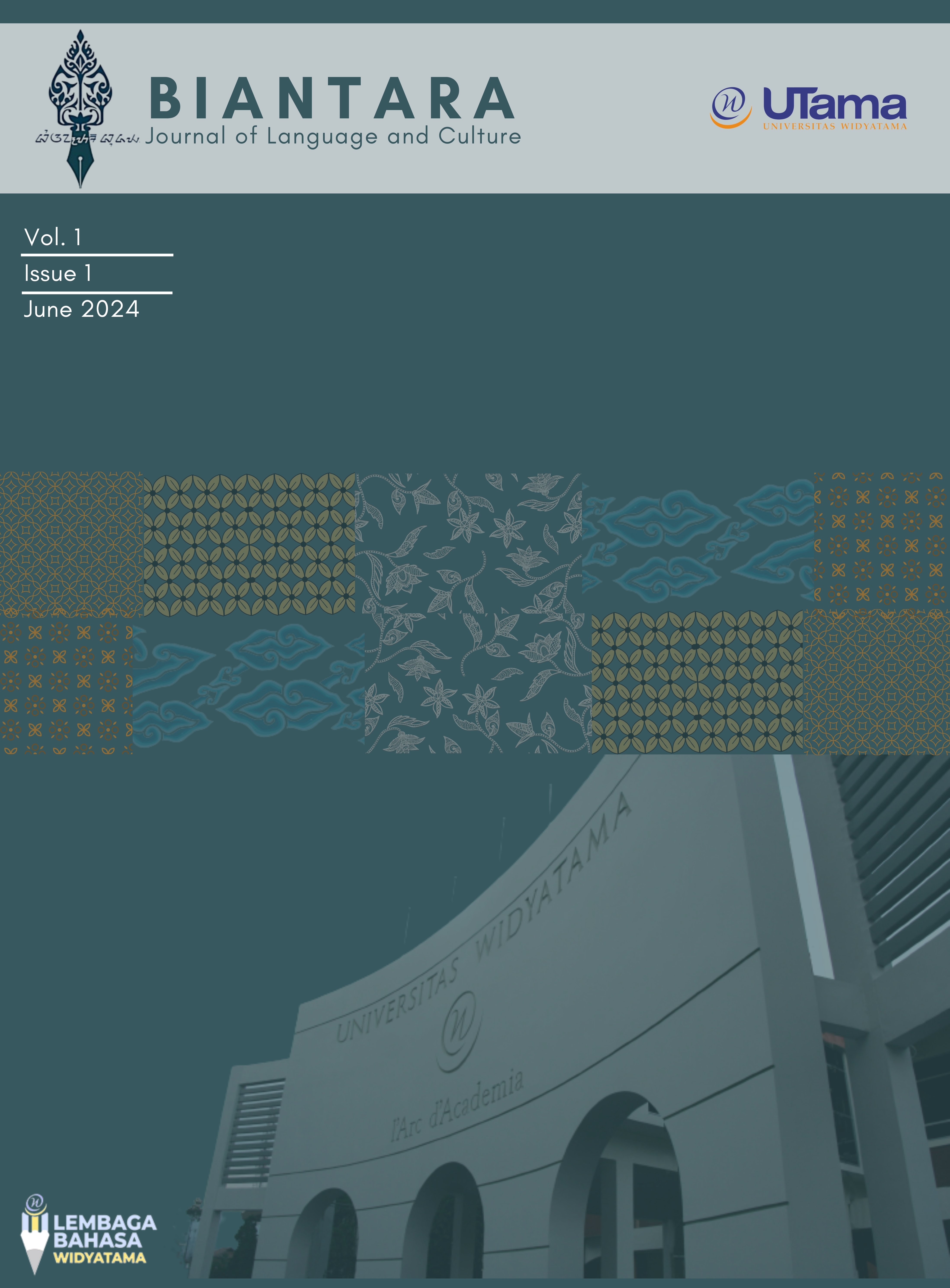LANGUAGE VARIATION IN THE MOVIE "HERBIE: FULLY LOADED"
Keywords:
Language variation, Slang, Argot, Jargon, IdiomAbstract
This study explores the sociolinguistic elements presented in the film Herbie: Fully Loaded, highlighting how dialect serves as a crucial tool for character development and social representation. The film utilizes a variety of speech styles, including slang, argot, jargon, and idioms, which reflect characters' distinct social roles and experiences. Central to this analysis is Maggie Peyton, the protagonist, whose linguistic evolution mirrors her personal growth and navigation through a male-dominated racing culture. Initial casual language reflects her uncertainty, while her eventual adoption of racing jargon signifies her integration and assertiveness within the competitive environment. This transformation aligns with Giles' communication accommodation and Hazen's variety hypotheses, evidencing how dialect variations reflect social dynamics, stratification, and character development. Additionally, the film examines gendered language use, depicting Maggie's speech transition as a means to challenge patriarchal expectations. The contrast between her affluent family's polished language and the racing community’s casual vernacular underscores economic disparities and Maggie's struggle for acceptance. Furthermore, the film effectively employs specific linguistic components to establish authenticity and engage viewers, revealing how dialect can shape narratives in popular media. Despite its sociolinguistic richness, Herbie: Fully Loaded has received limited academic attention, indicating the necessity for further exploration of language's role in family-oriented films and its reflections on social perceptions. This study contributes to the understanding of how language variations in film can reflect and influence societal attitudes, paving the way for subsequent research in sociolinguistics in cinematic contexts.
References
Aditiawan, Rohmad & Suhardi, Suhardi. (2024). Language Acculturation of Javanese and Madurese Communities: Slang Variations of Pendalungan Teenagers in Jember Regency. International Journal of Multicultural and Multireligious Understanding, 11, 278. https://doi.org/10.18415/ijmmu.v11i3.5573.
Arde, A., Hamidah, A., Rosalina, S., & Triyadi, S. (2023). Kajian Sosiolinguistik Ragam Bahasa Gaul di Media Sosial Tiktok pada Masa Pandemi Covid-19 dan Pemanfaatannya Sebagai Kamus Bahasa Gaul. Jurnal Onoma: Pendidikan, Bahasa, Dan Sastra, 9(1), 61–68. https://doi.org/10.30605/ONOMA.V9I1.2029.
Chaer, A., & Agustina, L. (2010). Sosiolinguistik Perkenalan Awal. Rineka Cipta.
Chaput, Louise. (2009). Nikolas Coupland. 2007. Style: Language variation and identity. Cambridge: Cambridge University Press. Canadian Journal of Linguistics/Revue canadienne de linguistique, 54, 565-567. https://doi.org/10.1017/S0008413100004643.
Giles, Howard & Mulac, Anthony & Bradac, James & Johnson, Patricia. (1987). Speech Accommodation Theory: The First Decade and Beyond. Communication Yearbook, 10, 10. https://doi.org/10.1080/23808985.1987.11678638.
Gumperz, John. (2014). 1982. Discourse Strategies. Cambridge: Cambridge UP, selected 1–7. https://doi.org/10.1075/z.184.47gum.
Hazen, Kirk. (2010). Labov: Language variation and change. 10.4135/9781446200957.n2.
Holmes, J. (2013). An Introduction to Sociolinguistics (4th ed.). Routledge. https://doi.org/10.4324/9781315833057.
Lippi-Green, Rosina. (2012). Teaching children how to discriminate. 10.4324/9780203348802-8.
Masua, Bernard & Masasi, Noel. (2020). Enhancing text pre-processing for Swahili language: Datasets for common Swahili stop-words, slangs, and typos with equivalent proper words. Data in Brief, 33, 106517. https://doi.org/10.1016/j.dib.2020.106517.
Pitrianti, S., & Maryani, S. (2023). Analisis Bahasa Slang Di Media Sosial Instagram. Jurnal Ilmiah SEMANTIKA, 5(01), 9–16. https://doi.org/10.46772/SEMANTIKA.V5I01.1305.
Quinn, Steve. (2013). Critical Inquiry of Rosina Lippi-Green's 1997 Study: "Teaching Children How to Discriminate: What We Learn from the Big Bad Wolf.”










